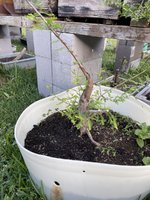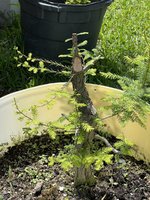Joe Dupre'
Masterpiece
Re: Henderson Swamp. From my research and talking to a biologist, I have an educated guess as to flairing and buttressing. Biologists know that full-time water up on the trunk of a cypress causes it to gradually lose vigor. Now, they don't know if that's 6", 1 foot or 3 feet up the trunk or how long any of these scenarios have to be in place. All I know is that in over 60 years of being in the midst of cypress swamps and lakes, trees in open water on local lakes tend to slowly die. In that slow process, it SEEMS the trees grow bigger bases as a reaction to open water waves and winds. Now, in those same swamps and lakes, I have personlly witnessed the water rising ( land also sinking) over 30 inches. 30 inches of rise would not be much to someone 50 feet above sea level. The small towns in my area ........the high ground..... are 3-5 feet above sea level. 30 inhes is a MAJOR factor there.
I have a little experient going on these last couple of years. The swamp where I collect has dozens if not hundreds of cypress in the 3/4" to 6" diameter. I've gone around to the smaller trees and bent them back and forth vigorously to hopefully stimulate flairing. We'll see this spring if it worked.
I have a little experient going on these last couple of years. The swamp where I collect has dozens if not hundreds of cypress in the 3/4" to 6" diameter. I've gone around to the smaller trees and bent them back and forth vigorously to hopefully stimulate flairing. We'll see this spring if it worked.
















